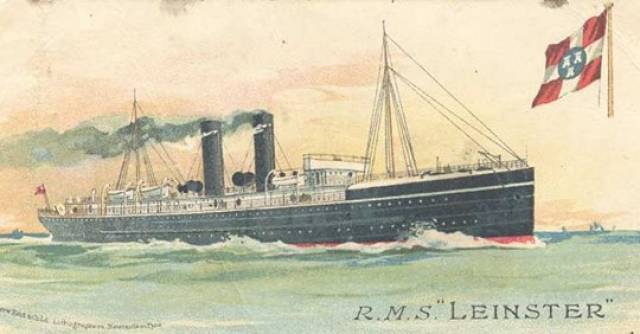#RMSLeinster - Centenary events to mark the tragic sinking of RMS Leinster in the Irish Sea during WW1, continue into next month in Dun Laoghaire, notably on 10 October, the day the 'mail-boat' 100 years ago was struck by a German U-Boat torpedo leading to a major loss of life.
On that infamous date in 1918 of Irish maritime history – the RMS Leinster operated by the City of Dublin Steam Packet had set off from Kingstown (Dun Laoghaire) bound for Holyhead, Wales. On board there were 77 crew among them postal-workers and 694 passengers.
The tragedy which struck the 'mail-boat' took place to the east of the Kish Bank lightship when submarine UB-123 torpedoed the ship, leading to the loss of more than 500 lives. To this day the incident remains as the single greatest loss of life in the Irish Sea.
RMS Leinster was one of a quartet named after the provinces of Ireland and the steam packet company was contracted the Royal Mail Service, hence the 'RMS' prefix designated to the ship's name. At the time of the disaster, the twin-propelled ship was camouflaged through paint effects and armed with one 12 pounder and two signal guns.
RMS Leinster Centenary Events
Events to commermorate the RMS Leinster will be held throughout Dun Laoghaire-Rathdown and is organised by the The Mail Boat Leinster Centenary Committee. To consult the centenary events click here from the 'yellow' brochure. For further news updates, click this link.
Among the various event venues, they include the National Maritime Mussuem of Ireland which is hosting a RMS Leinster exhibition. The museum has a detailed listing of events and activities including links providing further detailed information.
Also available is a calendar of events click here for the 'blue' brochure with front cover depicting RMS Leinster.
The museum located next to the dlrLexicon Library (also holding events) aptly overlooks the Carlisle Pier, from where the RMS Leinster departed on its fateful final crossing.

























